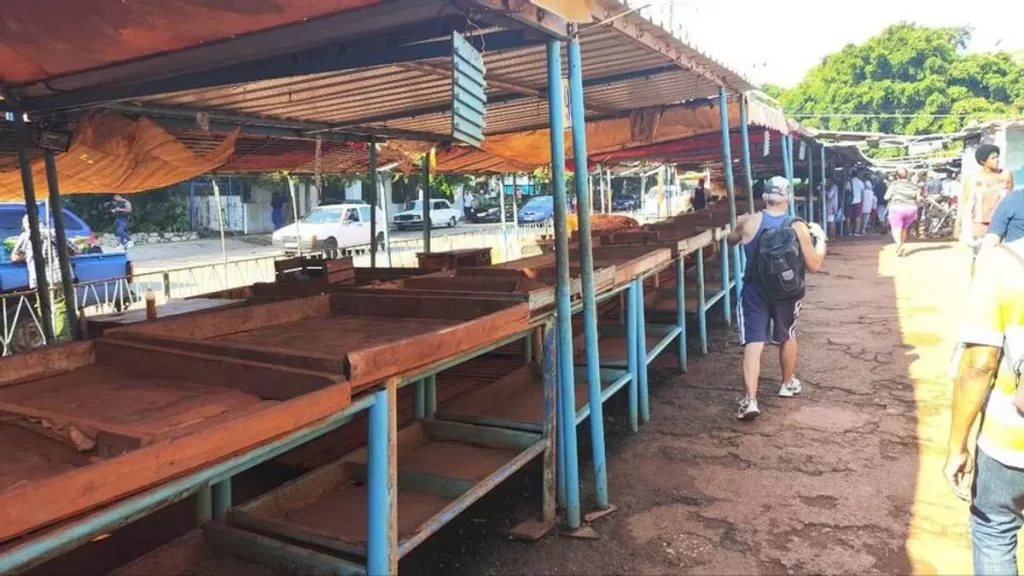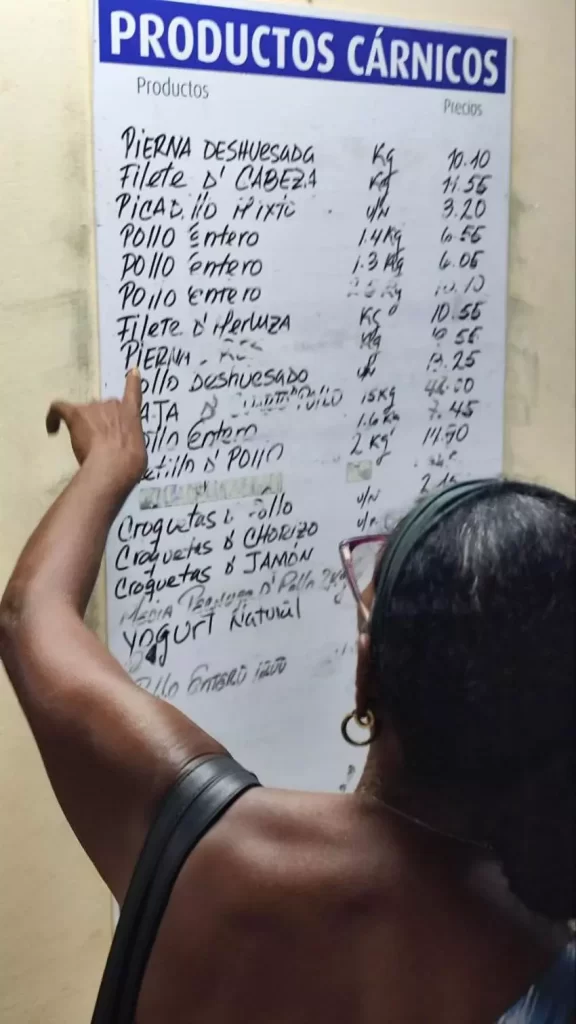Many stores do not have any of the six items for sale with established prices.

![]() 14ymedio, Miguel García/Juan Diego Rodríguez, Holguín/Havana, 9 July 2024 — Curiosity and need come together in the private shops of Holguin, which this Tuesday have had a greater influx of customers than on other days. At the entrance to the premises, a board showed the new prices, which have been capped for basic products since July 8.
14ymedio, Miguel García/Juan Diego Rodríguez, Holguín/Havana, 9 July 2024 — Curiosity and need come together in the private shops of Holguin, which this Tuesday have had a greater influx of customers than on other days. At the entrance to the premises, a board showed the new prices, which have been capped for basic products since July 8.
In one of the many points of sale visited by 14ymedio, the employees had just learned about the new regulation and changed, in view of the buyers, the numbers written next to each item . Although the oil and pasta were below the new amounts, the powdered milk went above the 1,675 pesos per kilo established by the Official Gazette.
In the kiosk managed by the MSME Bodegón Holguín, the line filling the sidewalk in front of the premises did not respond, however, to any of the six products that have been exempted from taxes on imports and which have capped prices. The crowd, in fact, was waiting to acquire the newly discounted instant soft drink packages, which are mainly intended for the school snack.
The capped price “is not going down because if that’s what’s legally allowed why sell it cheaper?”
This Monday, vegetable oil at 990 pesos per liter was now in line with the new regulation. But the price, instead of satisfying consumers, raised criticism among those who believe that once set at that limit, “it will not go down because if that is what is legally allowed, why sell it cheaper?” asked an elderly woman who arrived at the Bodegón. continue reading
With a pension of 1,420 pesos per month, she can’t benefit from the new prices. “There is a lot of disorganization with this measure. At the Chinese Fair there were several kiosks that have not even heard about it and still have cooking oil at more than 1,000 pesos per liter,” the woman complained. “I found chopped chicken at 370 and 380 pesos per pound in several places; it seems that they have not realized that it’s at 340.
In Havana, the panorama has not been very different. Some central businesses have opted for caution, while several places in El Vedado and the neighborhood of Cayo Hueso did not even have for sale what popular humor has already baptized as “the magnificent six.” Others displayed the new prices on their boards.

On Reina Street, in the municipality of Centro Habana, on Monday the line was extended in front of a private business that announced a pound of chicken at 310 pesos. What was saved in money was lost in time, because the line could take up to two hours between getting a number and accessing the counter. The main cause of the delay, according to an employee, was that “we have to wait for them to bring more supplies.” They were exhausted due to the multiplied demand.
In Havana, the shelves of the Youth Labor Army [EJT] market at 17 and K, which last week appeared surprisingly empty in the face of the confusion due to the entry into force of the capped prices, returned to their usual appearance. However, they didn’t sell chicken. “The chicken is still kidnapped,” an old woman said with a sneer.
The prices in the informal market, through home delivery applications on social media groups that market everything from spaghetti to beef, were the same as a few days ago, unrelated to the new official guidelines.
“The big chicken thighs: I’m not lying. If you want quality, this is your option at 380 pesos per pound and we charge home delivery separately,” said an ad in a WhatsApp thread dedicated to food and cleaning products. In the photo that accompanied the ad you could see a package with the colors of the American flag and three letters: USA.
Translated by Regina Anavy
____________
COLLABORATE WITH OUR WORK: The 14ymedio team is committed to practicing serious journalism that reflects Cuba’s reality in all its depth. Thank you for joining us on this long journey. We invite you to continue supporting us by becoming a member of 14ymedio now. Together we can continue transforming journalism in Cuba.

































